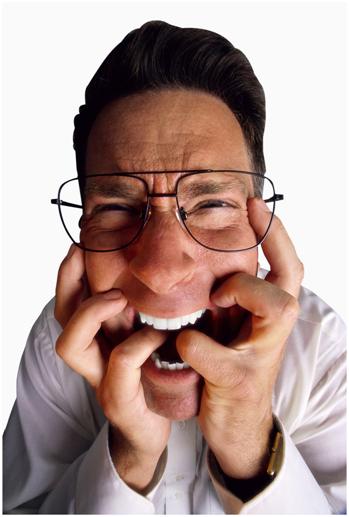Lake Mary counselor defines various ways anxiety manifests itself. Does it seem like an unseen monster lurks around the corner? Does fear and worry weigh you down? Frustrated because you feeling like nothing will ever change? Everyone experiences anxiety as it is a normal response to threatening situations; however, for some people it becomes a disabling response to life. Irrational responses to everyday situations seem to cripple the 40 million Americans who suffer from anxiety disorder each year. In fact more people suffer from anxiety than depression!
What differentiates everyday anxiety from an anxiety disorder? The key words with everyday anxiety are appropriate and reasonable. “Butterflies” in the stomach is a common physiological response when someone experiences anxiety before giving a speech or entering a competition. If a burglar tries to break into your house, fear is a normal response to the situation. So challenges in life that involve lose or failure, and unexpected or unknown situations all cause normative anxiety responses.
Anxiety disorders involve a much more intense response, last a lot longer after the stress situation concludes, and disrupts normal functioning. Anxiety disorders often lead to secondary issues such as low self-esteem, impaired relationships, substance abuse, and depression.
Six anxiety disorders are as follows:
- Generalized Anxiety Disorder (GAD),
- Specific Phobia,
- Social Anxiety Disorder,
- Obsessive-Compulsive Disorder (OCD),
- Panic Disorder, and
- Post-Traumatic Stress Disorder (PTSD).
Despite their different forms, these disorders all are neurobiological in nature. Anxiety negatively impacts lives and involves persistent, intense, all-consuming fears or worries. People who suffer from anxiety look for emotional escape and avoidance, which leads them to become observers of their existence rather than participants in life.
Specific phobias involve avoiding particular types of objects or situations:
- Heights
- Flying,
- Driving,
- Elevators,
- Dental
- Medical procedures, and
- Animals are all common objects or situations that can cause irrational fear and anxiety.
OCD is characterized by obsessions and compulsions that interrupt normal routines, relationships, and daily functioning.
- Obsessions are unwanted thoughts, impulses, or ideas that intrude upon a person’s thinking and create increased worry or anxiety.
- Compulsions are responses to those obsessive thoughts and are done to relieve or prevent the anxiety.
PTSD often develops after a traumatic event where a person’s safety or life is threatened or where he/she has witnessed a traumatic event. Even months after the event occurred, people experiencing PTSD have trouble coping with the disabling psychological symptoms created by the event. Social anxiety is one of the most common types of anxiety and is marked by an extreme fear of being embarrassed in a social setting. People are often concerned with being judged or humiliated publicly. The most common type of social anxiety disorder is performance anxiety, such as public speaking.
Panic disorder seems to occur without any apparent cause and is characterized by an episode of apprehension and intense fear. Often when someone first experiences Panic Disorder they believe that they are experiencing a heart attack! There physical response to fear is so intense that they experience chest pain, dizziness and shortness of breath.
Generalized Anxiety Disorder (GAD): People who suffer from GAD worry excessively about everyday things, such as health issues, work, money, and relationship problems. Many people suffer in silence from this unseen monster and never seek treatment because they don’t believe their live can be any different.
Treatment Options: Despite the toll it takes on your life, the good news is that anxiety disorders are highly treatable! Effective treatment for anxiety disorders includes cognitive-behavioral therapy (CBT), dialectical behavioral therapy (DBT) and exposure based behavioral therapy.
- Cognitive-behavioral therapy helps people change their thinking patterns and the way they react to anxiety provoking situations.
- DBT targets skills deficits as well as the cognitive beliefs that maintain the avoidance. The ultimate goal is for you to learn more strategic behavior skills that once acceptance of those feelings occur.
- Both CBT and DBT incorporate relaxation and stress reduction techniques into their treatment of anxiety.
- Often they both make use of exposure therapy. Exposure therapy gradually acclimates a person to situations that previously triggered anxiety. This desensitization process helps people confront their fears in a controlled environment.
- Once phobias are no longer “rewarded” by escape and avoidance, they tend to diminish and fade away. Interestingly, twenty minutes of aerobic exercise per day is thought to be an effective weapon against anxiety.
- Good nutrition is essential and adding supplements such as B Vitamins, calcium, amino acids, and Vitamin C may be important. Caffeine and cigarettes aggravate anxiety and should be eliminated or decreased.
Don’t let anxiety rule your life. Get into therapy, exercise, eat right and experience life to its fullest!
NOTE: you can freely redistribute this resource, electronically or in print, provided you leave the authors contact information below intact.
Author: Evelyn Wenzel,MSW,LCSW,CAP






